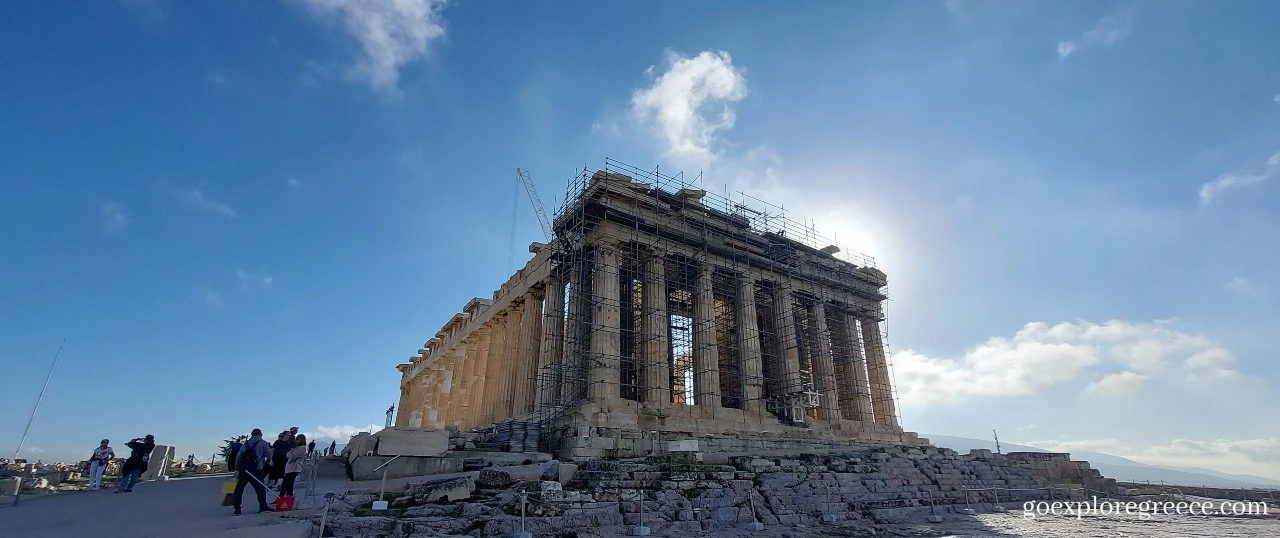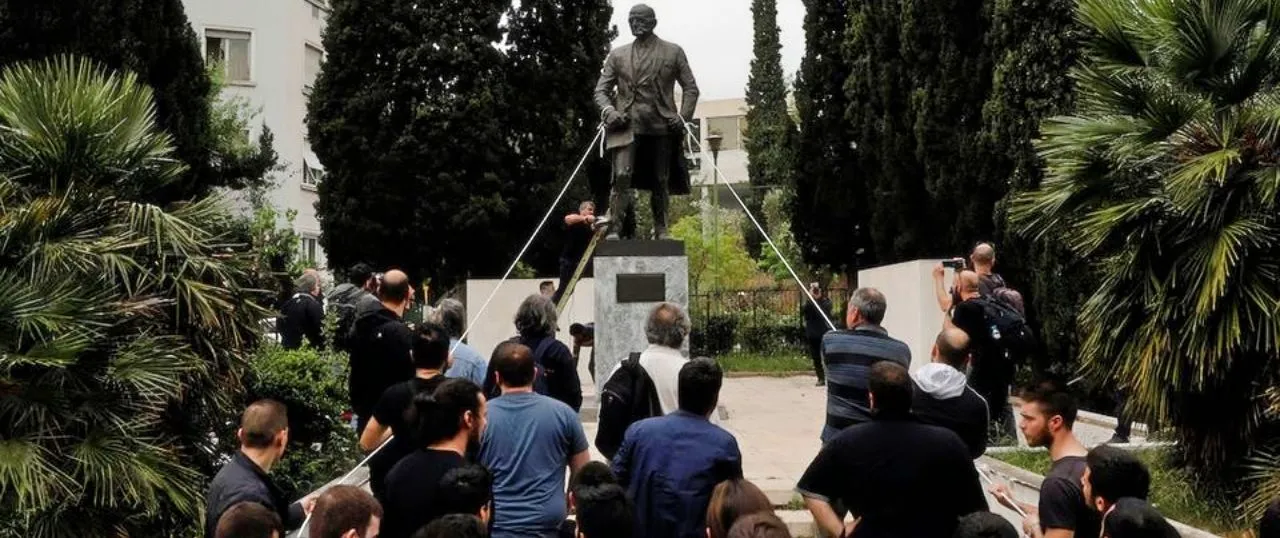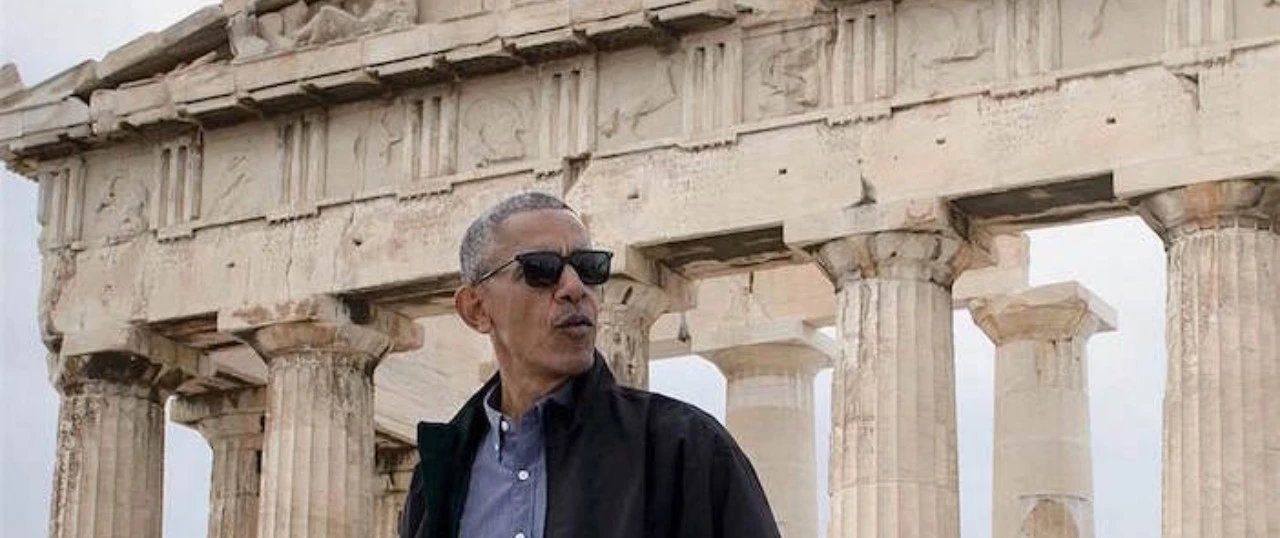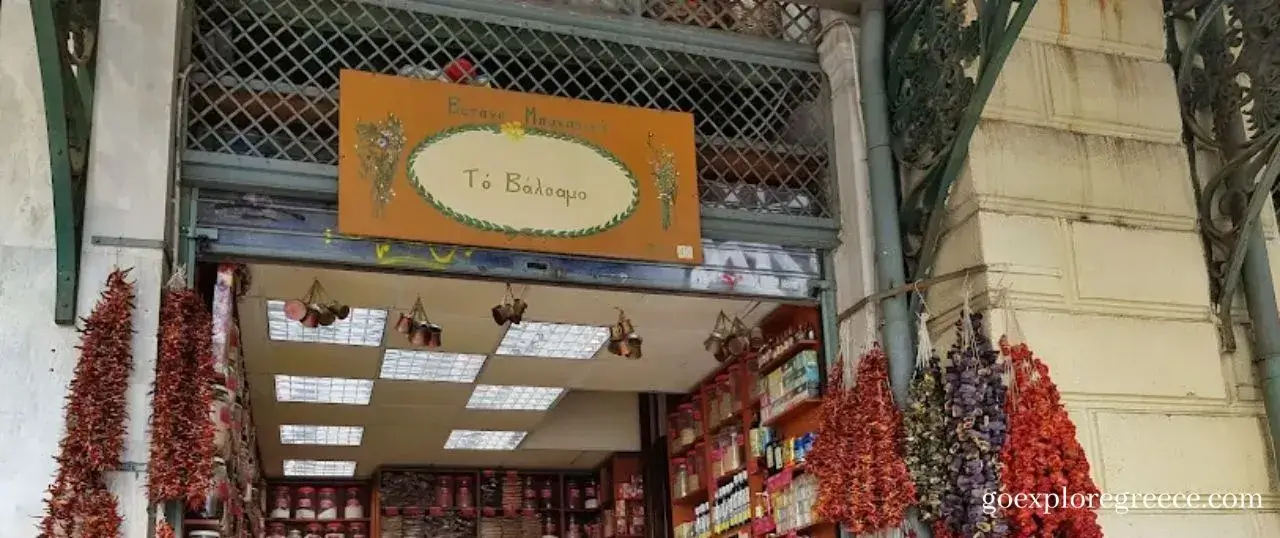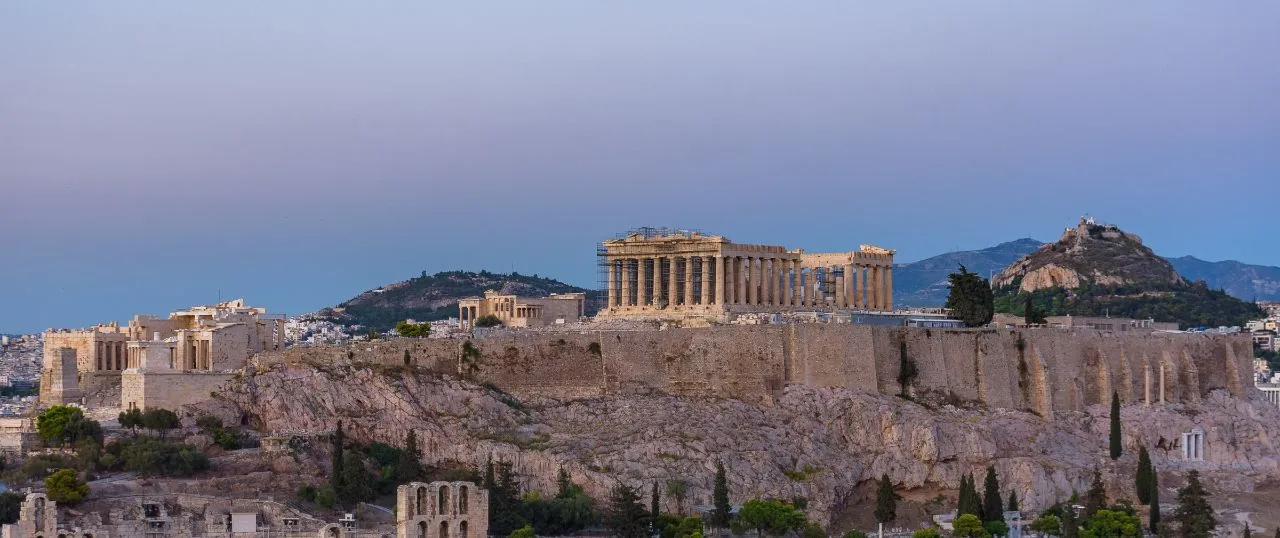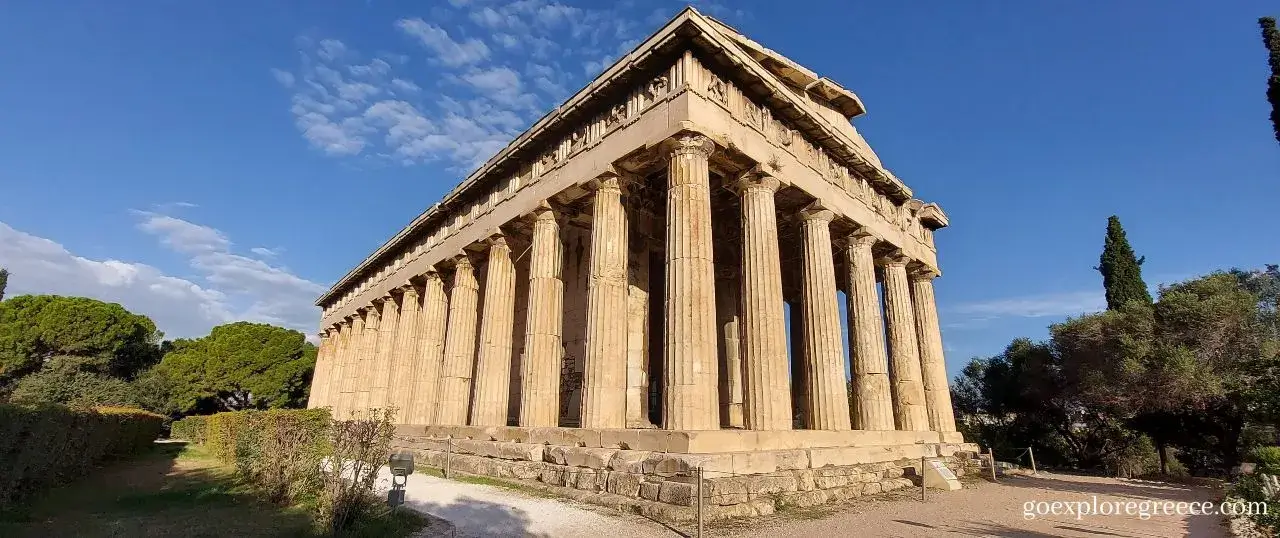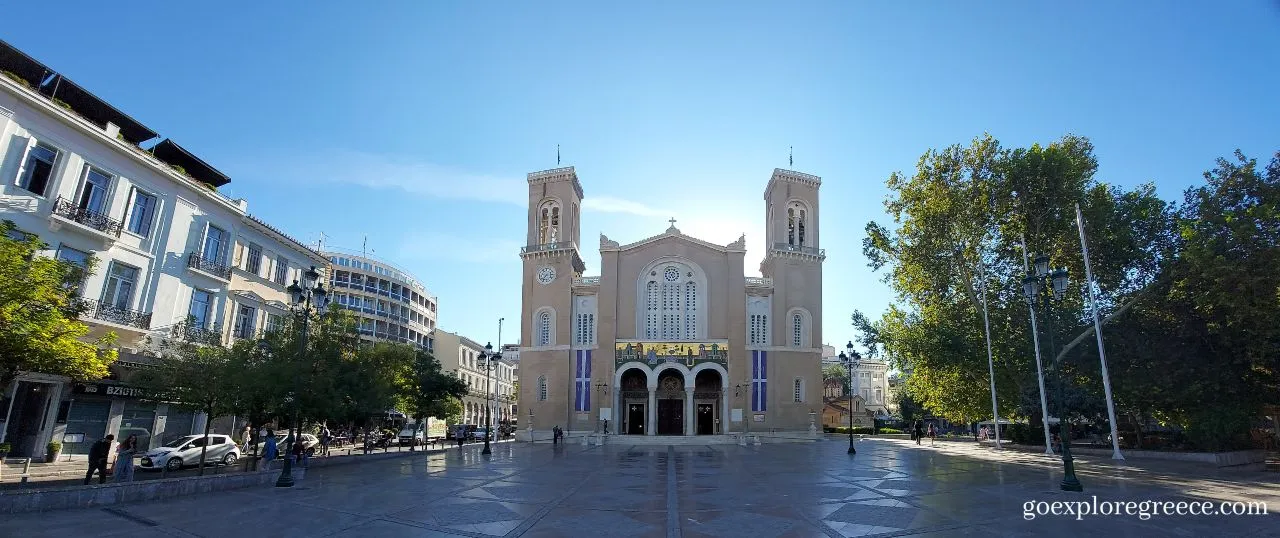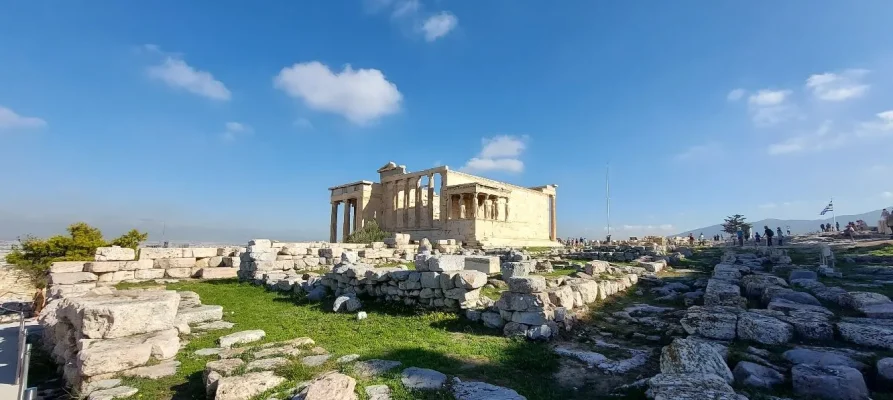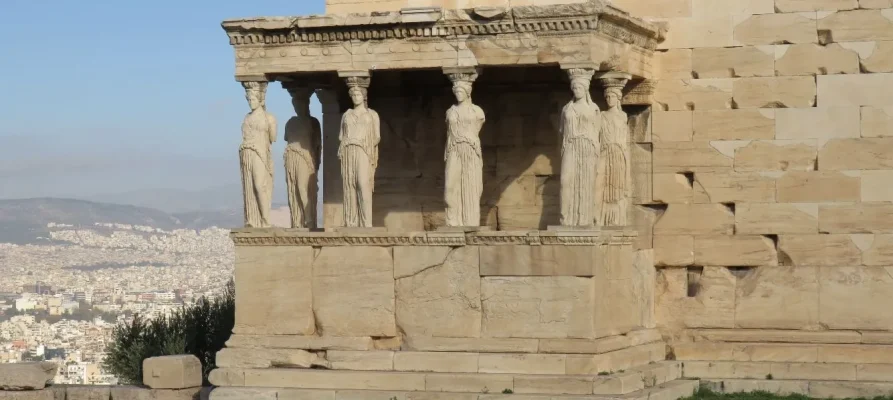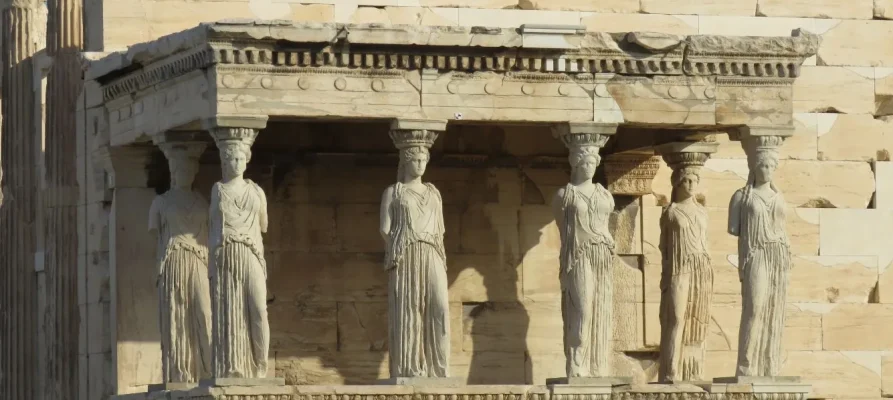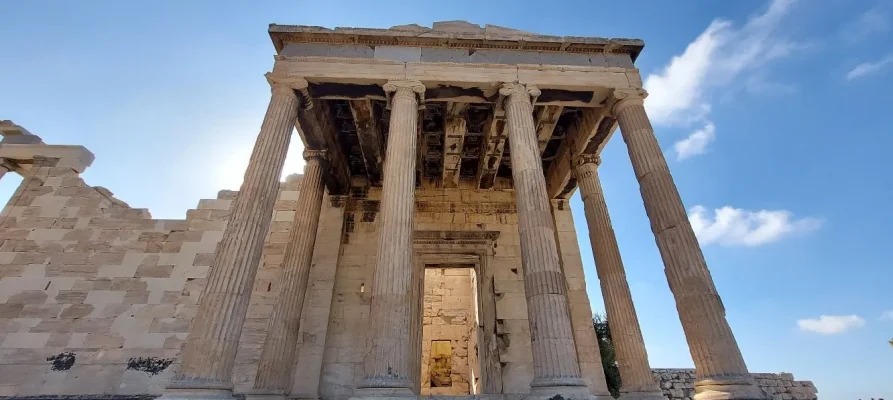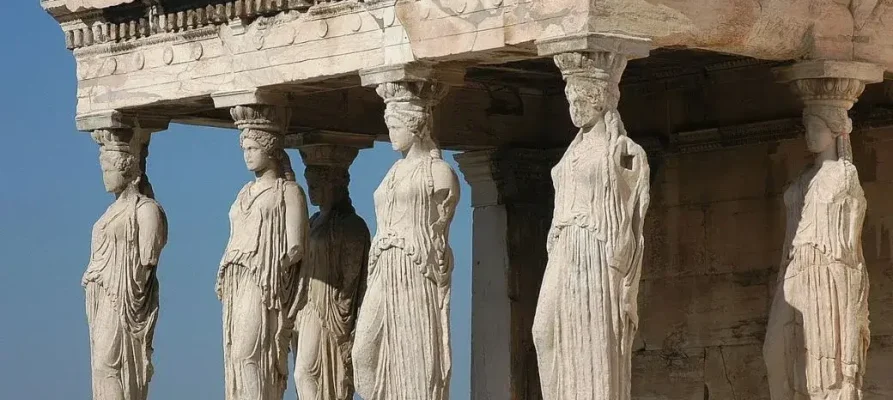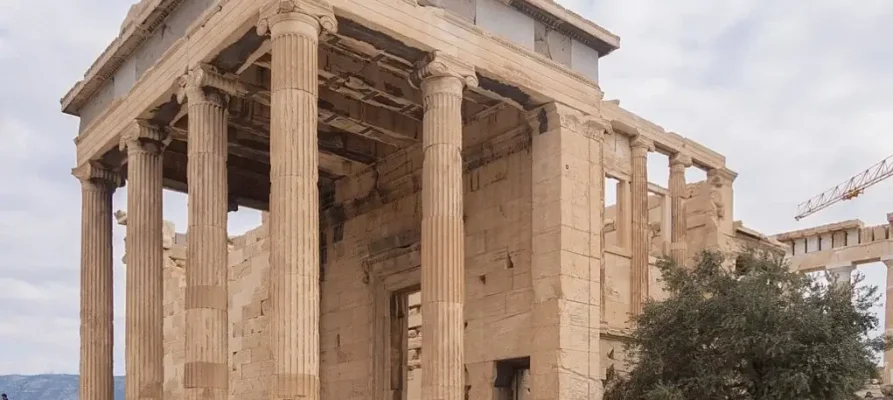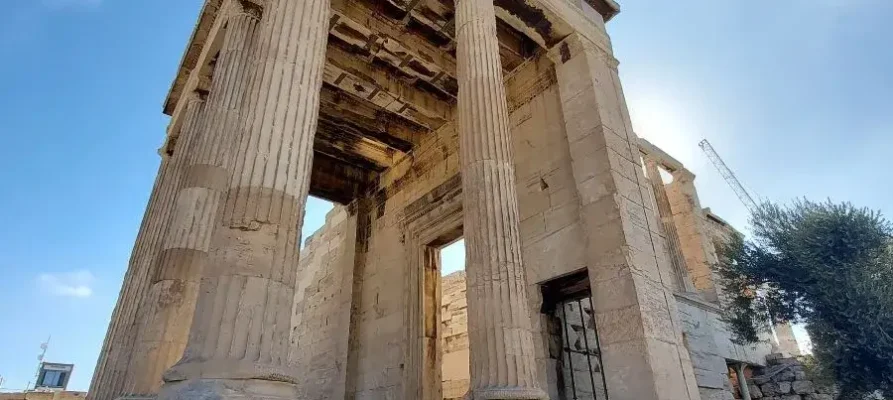Erechtheion
Erechtheion
I simply cannot wait to share with you one of the most fascinating and enchanting sites in this ancient city: the Erechtheion. Nestled atop the sacred Acropolis of Athens and just opposite the Parthenon, this architectural marvel is steeped in history and myth, offering an unforgettable experience for anyone visiting Athens. So, let’s dive in and explore why you absolutely must visit the Erechtheion on your next trip to Athens.
The first thing you need to know about the Erechtheion is where it got its name. It was named after Erechtheus, a legendary king of Athens, who was believed to have been born from the Earth itself. The temple is also sometimes referred to as the Erechtheum and is an essential part of Greek history and a testament to ancient Greek civilisation’s ingenuity and artistic prowess.
Now, let’s talk about age. The Erechtheion is an impressive 2,500 years old. Built between 421 and 406 BC, this ancient temple was constructed during the golden age of Athenian democracy. The temple was built to honour Athena and Poseidon, two of the most important deities in ancient Greek religion, and the renowned architect, Mnesicles, was responsible for the design.
But why was it built, you ask? Well, the Erechtheion was constructed to replace the earlier temples that were destroyed during the Persian invasion in 480 BC. The Athenians wanted to create a new sacred space to pay homage to their gods, resulting in this magnificent temple.
Now, let’s delve into one of the most captivating stories surrounding the Erechtheion: the battle for the patronage of Athens between Athena and Poseidon. According to ancient Greek mythology, both deities wanted to become the guardian of the city. To decide who would be granted this honour, each god gave the people of Athens a gift. Poseidon, the god of the sea, struck his trident into the ground and created a saltwater spring. Athena, the goddess of wisdom and war, offered the citizens something more practical: the olive tree, a symbol of peace, prosperity, and nourishment. In the end, the Athenians chose Athena as their patron goddess and the city was named in her honour: Athens.
As you wander through the Erechtheion, you’ll be struck by its design’s sheer beauty and intricacy. One of the most famous features of the temple is the Porch of the Caryatids, a group of six female statues that serve as columns supporting the south porch. These enchanting figures, carved from marble, appear to be gracefully holding up the roof, showcasing the incredible artistic skill of the ancient Greeks.
You’ll also come across the spot where the sacred olive tree, gifted by Athena, once stood. Although the original tree is long gone, a modern olive tree has been planted in its place, symbolising the enduring connection between Athens and its patron goddess.
And don’t forget the spot where it’s said that Poseidon’s trident struck the temple’s base, creating a well of saltwater as his gift to the Athenians. Today, you can still see the marks left by Poseidon’s trident, which serve as a fascinating reminder of the myth that played such a crucial role in shaping the history and identity of Athens. These marks are visible on the north side of the Erechtheion, near the entrance to the temple.
The Erechtheion is not only an architectural masterpiece but also a powerful symbol of Athenian identity and the city’s deep connection to its mythological past. As you walk through this ancient temple, you’ll be transported back in time, feeling the presence of the gods and the echoes of history. You’ll gain a newfound appreciation for the richness of Greek culture and the remarkable achievements of this ancient civilisation.
A visit to the Erechtheion is truly a journey through time, where you’ll be able to connect with the rich heritage of ancient Athens and the fascinating tales of its divine patrons, Athena and Poseidon.
Beyond the Erechtheion itself, the Acropolis of Athens is a treasure trove of other remarkable sights, including the iconic Parthenon and the Temple of Athena Nike. As you explore these ancient structures, you’ll gain a deeper understanding of the incredible achievements of Greek civilisation and the enduring impact of their culture on the world today.
And let’s not forget the breathtaking views from the Acropolis of Athens. As you stand atop this sacred hill, you’ll be treated to a panoramic vista of modern Athens sprawling beneath you. The contrast between the ancient world and the bustling metropolis will leave you in awe of the city’s incredible evolution over the centuries. From the top of the Acropolis of Athens, you’ll now have the best views of the top things to see in Athens, including the Theatre of Dionysus, Stoa of Attalos, the Temple of Hephaestus, the Ancient Agora of Athens, the Acropolis Museum, the Pnyx, Mount Lycabettus, the Arch of Hadrian, Filopappou Hill, the Temple of Olympian Zeus, the Odeon of Herodes Atticus, the Zappeion Garden, and the Athens National Garden.
So, my fellow travellers, I cannot emphasise the importance of making the Erechtheion a top priority on your trip to Athens enough. Not only will you be entranced by its captivating history and the stories of the gods, but you’ll also have the unique opportunity to witness the remarkable fusion of ancient and modern Athens from the vantage point of the Acropolis.
By exploring the Erechtheion and the surrounding wonders of the Acropolis, you’ll leave with a profound appreciation for the enduring legacy of ancient Greece and the incredible people who shaped its history. The memories you make during your visit will stay with you long after you’ve returned home, and you’ll find yourself longing to return to this captivating city and the enchanting world of the Erechtheion.
Since the Erechtheion is part of the Acropolis of Athens, you will need tickets. Based on my personal experience, these top 3 Acropolis of Athens tickets are a must for any visitor. If you’re keen on exploring all the options, just click right here for the complete list of tickets to make the most of your visit.
Thanks to the Greek Government, from the beginning of 2021, visitors with mobility issues now have access to the Erechtheion, the Parthenon and the Acropolis of Athens thanks to a new lift and specially designed paths facilitating wheelchair access.
The modern lift, which replaces a repeatedly malfunctioning one, is located on the north face of the Acropolis along the ancient promenade and will transport wheelchair users and individuals with Disabilities and Impairments to the top of the hill.
The specially designed and renovated 500-meter-long and four-meter-wide pathways also provide access to and around the Parthenon.
Wheelchair Access: A designated wheelchair-accessible route leads up to the Acropolis. While the pathway is mostly smooth and paved, some areas may be uneven due to the ancient site’s nature. It is recommended to have a companion to assist with manoeuvring through any challenging sections.

